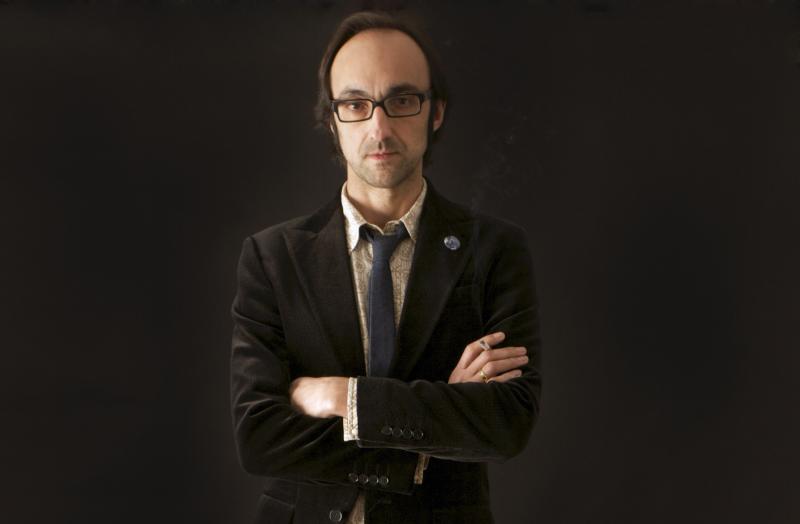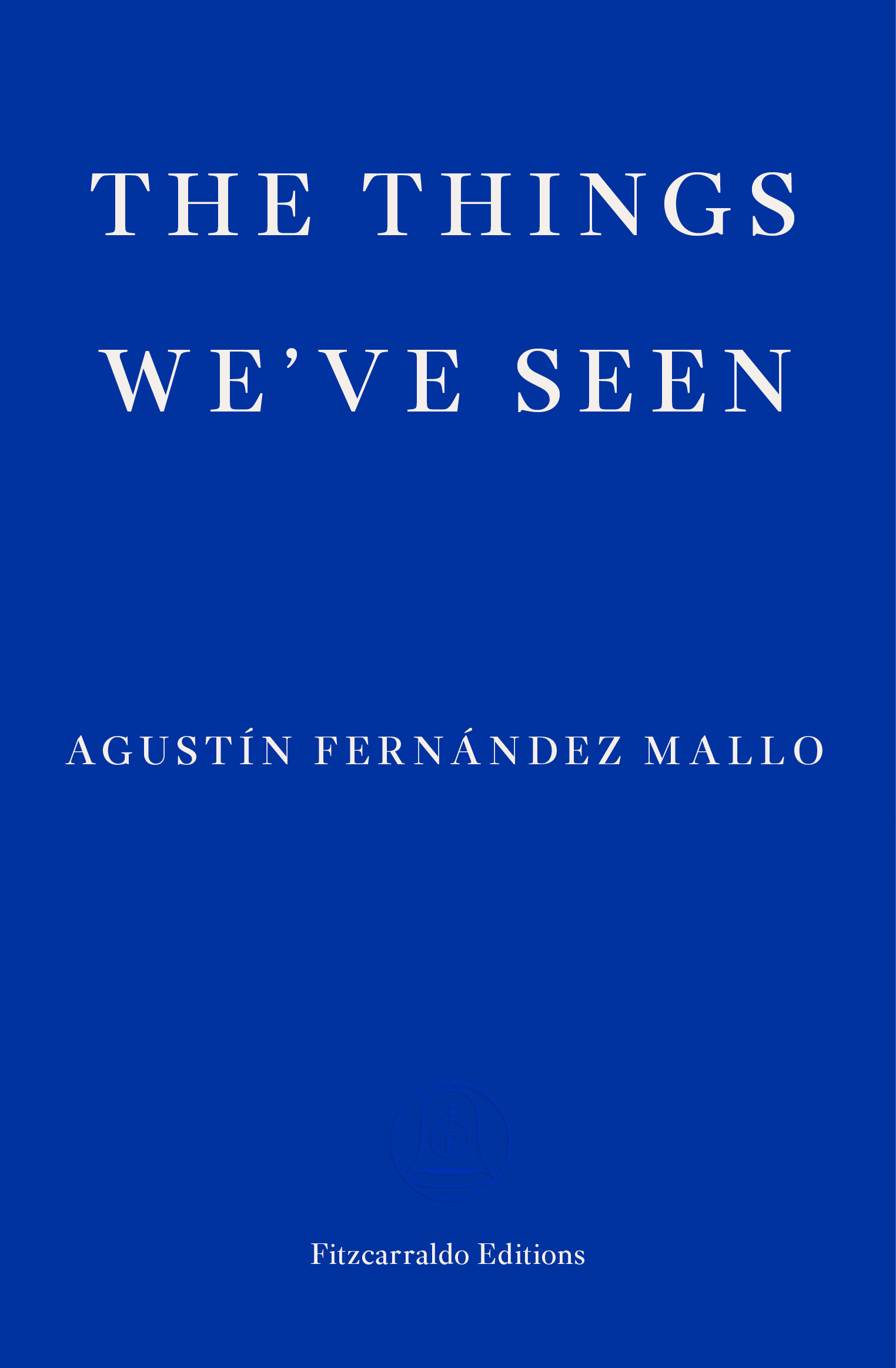Agustín Fernández Mallo: The Things We've Seen review - degrees of separation | reviews, news & interviews
Agustín Fernández Mallo: The Things We've Seen review - degrees of separation
Agustín Fernández Mallo: The Things We've Seen review - degrees of separation
The B-side of reality comes to the fore in this roving exploration of connection and isolation

Trilogies (it is noted, in the term’s Wikipedia entry) “are common in speculative fiction”. They are found in those works with elements “non-existent in reality”, which cover various themes “in the context of the supernatural, futuristic, and many other imaginative topics”.
Although The Things We've Seen offers little by way of strict chronology, the novel "begins" on the Spanish of island of San Simón. There, a narrator and writer (of close resemblance to Mallo) is due to participate in a series of panel discussions for a programme entitled “Net Thinking”. Despite his scant contributions, the narrator decides “to offer something up about when communities, whether human or animal, are isolated for long periods”. It is an oddly prescient moment (the Spanish original was published as far back as 2018) which, short of accounting for the ensuing pandemic, nevertheless underlines its acceleratory effects. This is a writer fascinated by the present state of the human condition, beset by the rapid onset of the internet, social media – “I saw the best minds of my generation destroyed by Facebook” is one oft-repeated line – and an increasingly pronounced sense of our own separation.
 Against these problems, The Things We’ve Seen presents itself as a cure, of sorts. The aim of the Net Thinking panel is “to reflect on digital networks” – a recurrent metaphor, but a metaphor first and foremost: for another, more fundamental connective thread. In an interview last year, discussing the novel with Spanish writer and critic Jorge Carriòn, Mallo remarked that, “We are all socially connected with somebody who died in war.” Here, nothing exists in isolation; it soon emerges that San Simón is a former Franquist concentration camp – and the start of the second part brings a new narrator, Kurt, an American veteran of the Vietnam War, who remains haunted at night by his memories of the conflict, of “gunfire and the rumble of a helicopter ripping away into the emptiness”. History, connection, association: these are not wholly unprecedented themes. “WG Sebald and I were twins,” declares the novel’s third and final narrator – an unnamed woman, charting a path along the Normandy coast in remembrance of a journey she made years previously. Unlike some of Mallo’s other creditors (notably, Salvador Dalí and Federico García Lorca), the author of The Rings of Saturn does not physically appear in the text. But Sebald’s influence is near-omnipresent, particularly whenever the novel's course strays east of the Atlantic.
Against these problems, The Things We’ve Seen presents itself as a cure, of sorts. The aim of the Net Thinking panel is “to reflect on digital networks” – a recurrent metaphor, but a metaphor first and foremost: for another, more fundamental connective thread. In an interview last year, discussing the novel with Spanish writer and critic Jorge Carriòn, Mallo remarked that, “We are all socially connected with somebody who died in war.” Here, nothing exists in isolation; it soon emerges that San Simón is a former Franquist concentration camp – and the start of the second part brings a new narrator, Kurt, an American veteran of the Vietnam War, who remains haunted at night by his memories of the conflict, of “gunfire and the rumble of a helicopter ripping away into the emptiness”. History, connection, association: these are not wholly unprecedented themes. “WG Sebald and I were twins,” declares the novel’s third and final narrator – an unnamed woman, charting a path along the Normandy coast in remembrance of a journey she made years previously. Unlike some of Mallo’s other creditors (notably, Salvador Dalí and Federico García Lorca), the author of The Rings of Saturn does not physically appear in the text. But Sebald’s influence is near-omnipresent, particularly whenever the novel's course strays east of the Atlantic.
If San Simón is a place of remembrance, Mallo’s America is one of forgetting. “The light is buried beneath chains and noises/in the impudent challenge of rootless science”, reads another line from Oroza, in his poem “Dawn in New York”. The so-called new-world is cast as paragon of the ahistorical, ephemeral and re-made, and of a rampant individualism that sits in stark contrast to the novel’s general preoccupation with the collective. Of this, Kurt is a symptom and a consequence. The fourth astronaut on the Apollo 11 mission to the moon, he has been “redacted” from the records, and wiped from collective memory. It is an act that betrays a disconnect between objective and subjective, one that is integral to Mallo’s conception of history. “In my mind”: the amalgamation of the novel’s otherwise disparate intrigues, the making of its meaning, occurs nowhere but within the imaginative faculties of the orchestrating human agent. So, having taken a job in a residents’ home, Kurt shares a room with a man known only as “Semicolon” – for whom an era-defining race between Clinton and Trump in the 2014 American Presidential election becomes, instead, a matter of Sarah Palin’s whereabouts: “that’s all he cares about”. Likewise, the initial narrator draws a blank at the term “Brexit”, precipitating a truly jarring sensation for any British reader – tempered only by the irony that the writer, Mallo himself, must recognise the term. Thus appears the novel’s true guise: as a compendia of the author’s own references, a translation-into-text of his knowledge, memories, and experiences.
Given that “weird”, “strange”, “odd” and “mind-bending” are just some of the words employed to describe The Things We’ve Seen, it is a surprise, and a shame, to have to add: “mundane”. The task of translation is trusted to Thomas Bunstead, and this is a novel of breadth, variety, and texture; nevertheless, a late reference to “fractal theory” as a structural model all but confirms a hunch that Mallo’s universe is the product not of desultory, surrealist magic, but of joyless and methodological experiment. Perhaps it is the natural end result of a set of characters shaped by the same niche, historical moments that they should each blur into one – that, personalities expunged, they should be each reduced to the role of mouthpiece, to exist as expounders of the philosophical themes rather than fully-fledged, living individuals. “It was always me taking the photos,” says Kurt, explaining (for the benefit of the reader alone) the reasons behind his inconspicuous absence, and so giving us the novel’s single most vital, life-affirming moment. In his private satisfaction, akin to the Barthesian punctum, the Lacanian stain, Kurt is afforded a small, if not entirely consolatary victory against the predominance of an objective, uniformly-accepted record. One imagines it is how Mallo may come to feel – about a novel that will likely mean a great deal to him, and a great deal less to his readers.
- The Things We've Seen by Agustín Fernández Mallo (Fitzcarraldo Editions, £14.99)
- Read more book reviews on theartsdesk
rating
Share this article
The future of Arts Journalism
You can stop theartsdesk.com closing!
We urgently need financing to survive. Our fundraising drive has thus far raised £49,000 but we need to reach £100,000 or we will be forced to close. Please contribute here: https://gofund.me/c3f6033d
And if you can forward this information to anyone who might assist, we’d be grateful.

Subscribe to theartsdesk.com
Thank you for continuing to read our work on theartsdesk.com. For unlimited access to every article in its entirety, including our archive of more than 15,000 pieces, we're asking for £5 per month or £40 per year. We feel it's a very good deal, and hope you do too.
To take a subscription now simply click here.
And if you're looking for that extra gift for a friend or family member, why not treat them to a theartsdesk.com gift subscription?
more Books
 'We are bowled over!' Thank you for your messages of love and support
Much-appreciated words of commendation from readers and the cultural community
'We are bowled over!' Thank you for your messages of love and support
Much-appreciated words of commendation from readers and the cultural community
 Thomas Pynchon - Shadow Ticket review - Pulp Diction
Thomas Pynchon's latest (and possibly last) book is fun - for a while
Thomas Pynchon - Shadow Ticket review - Pulp Diction
Thomas Pynchon's latest (and possibly last) book is fun - for a while
 Justin Lewis: Into the Groove review - fun and fact-filled trip through Eighties pop
Month by month journey through a decade gives insights into ordinary people’s lives
Justin Lewis: Into the Groove review - fun and fact-filled trip through Eighties pop
Month by month journey through a decade gives insights into ordinary people’s lives
 Joanna Pocock: Greyhound review - on the road again
A writer retraces her steps to furrow a deeper path through modern America
Joanna Pocock: Greyhound review - on the road again
A writer retraces her steps to furrow a deeper path through modern America
 Mark Hussey: Mrs Dalloway - Biography of a Novel review - echoes across crises
On the centenary of the work's publication an insightful book shows its prescience
Mark Hussey: Mrs Dalloway - Biography of a Novel review - echoes across crises
On the centenary of the work's publication an insightful book shows its prescience
 Frances Wilson: Electric Spark - The Enigma of Muriel Spark review - the matter of fact
Frances Wilson employs her full artistic power to keep pace with Spark’s fantastic and fugitive life
Frances Wilson: Electric Spark - The Enigma of Muriel Spark review - the matter of fact
Frances Wilson employs her full artistic power to keep pace with Spark’s fantastic and fugitive life
 Elizabeth Alker: Everything We Do is Music review - Prokofiev goes pop
A compelling journey into a surprising musical kinship
Elizabeth Alker: Everything We Do is Music review - Prokofiev goes pop
A compelling journey into a surprising musical kinship
 Natalia Ginzburg: The City and the House review - a dying art
Dick Davis renders this analogue love-letter in polyphonic English
Natalia Ginzburg: The City and the House review - a dying art
Dick Davis renders this analogue love-letter in polyphonic English
 Tom Raworth: Cancer review - truthfulness
A 'lost' book reconfirms Raworth’s legacy as one of the great lyric poets
Tom Raworth: Cancer review - truthfulness
A 'lost' book reconfirms Raworth’s legacy as one of the great lyric poets
 Ian Leslie: John and Paul - A Love Story in Songs review - help!
Ian Leslie loses himself in amateur psychology, and fatally misreads The Beatles
Ian Leslie: John and Paul - A Love Story in Songs review - help!
Ian Leslie loses himself in amateur psychology, and fatally misreads The Beatles
 Samuel Arbesman: The Magic of Code review - the spark ages
A wide-eyed take on our digital world can’t quite dispel the dangers
Samuel Arbesman: The Magic of Code review - the spark ages
A wide-eyed take on our digital world can’t quite dispel the dangers
 Zsuzsanna Gahse: Mountainish review - seeking refuge
Notes on danger and dialogue in the shadow of the Swiss Alps
Zsuzsanna Gahse: Mountainish review - seeking refuge
Notes on danger and dialogue in the shadow of the Swiss Alps

Add comment